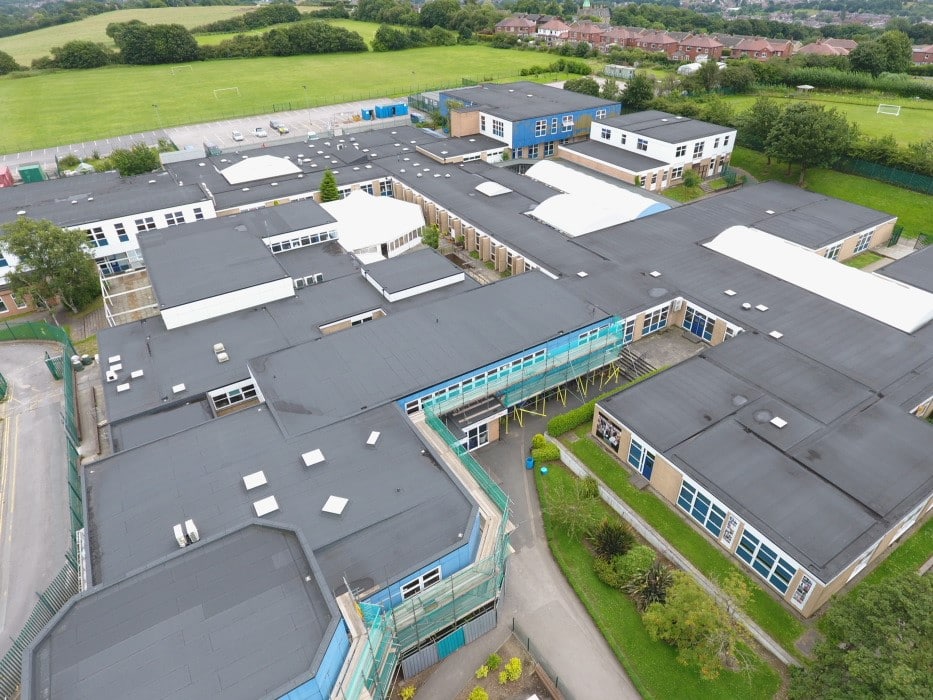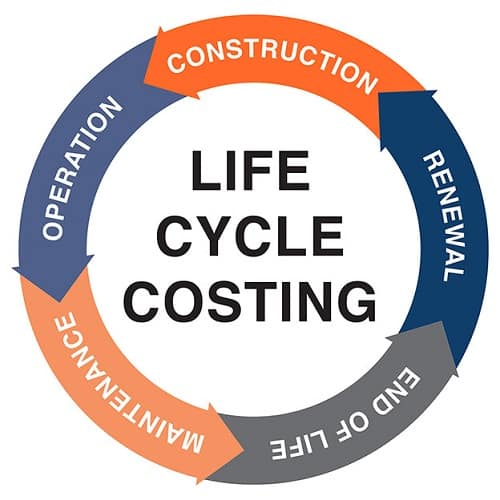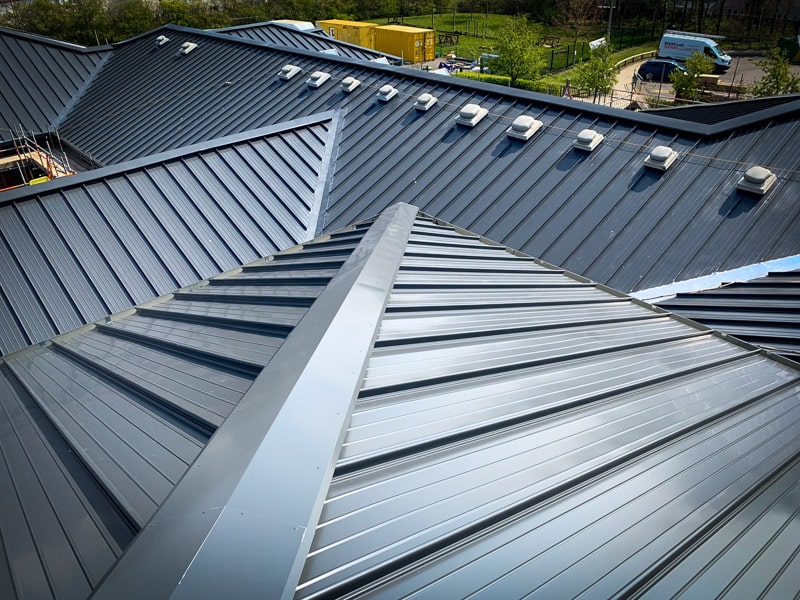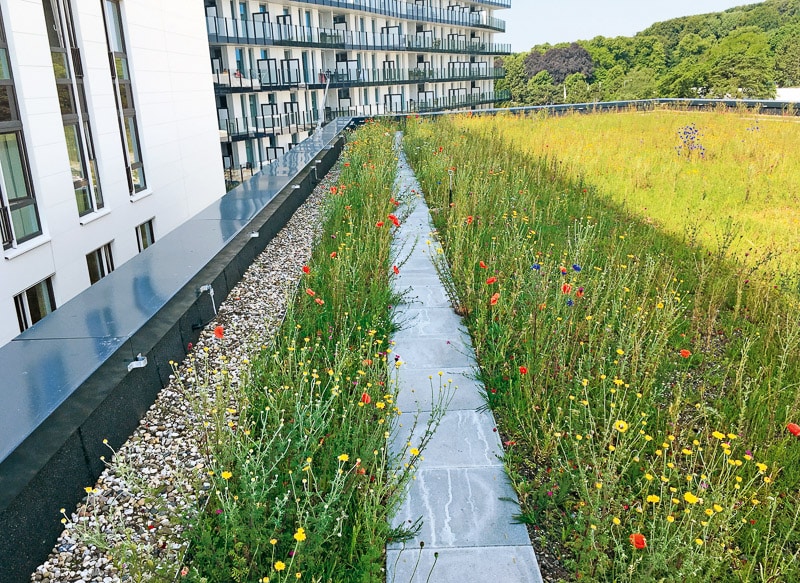

Often, roofing systems are evaluated and selected solely on their initial cost, without considering the long-term costs of ownership. To truly understand the cost of a new roof it is essential that you consider the costs that will be incurred over the life of your roof. Life Cycle Costing (LCC) allows for a more holistic approach to be taken, which will not only save you money but also improve the sustainability of your building and help to meet Government environmental targets.
We’ll discuss what Life Cycle Costing is, how it works, and how Garland UK can help you achieve the many benefits that it provides.
What is Life Cycle Costing?
Life Cycle Costing (LCC) is fundamentally just a numerical tool that allows for the complete cost of a given element or component to be analysed over its life cycle, allowing for easy and accurate comparison against alternative options for both new build and refurbishment projects.
LCC achieves this by providing a standardised methodology (defined in BS/ISO 15686-5:2017) that takes account of all relevant costs over a defined amount of time (construction, renewal, operation, maintenance, end of life) by using Net Present Value (NPV) analysis, to account for all expected expenditures and savings, net of taxes, throughout the analysis period.
Life Cycle Costing and Sustainability
LCC is also an essential component when assessing the sustainability of a project. A full accounting of sustainability will consider the environmental, social and economic issues at play.
Both BREEAM and LEED encourage the use of LCC calculations to assess the economic sustainability of a chosen system and indeed the building as a whole.
In addition, the Government’s Construction Strategy 2016-2020 aims to reduce whole life costs by 33%, and LCC provides an invaluable tool to help to achieve these goals.

BREEAM Credits
LCC has always been an intrinsic part of the BREEAM assessment. There are four credits available under the Management section Man02 for the use of LCC and service life planning. Three credits are available at RIBA stage 2 – concept design, the first two for the preparation of an Elemental Life Cycle Cost Plan and the third for reporting the Capital costs of a project. Both of these require estimates for:
- Construction
- Renewal
- Operation
- Maintenance
- End of life
The last BREEAM credit is achieved in RIBA stage 4 – technical design, where an LCC comparison of different components must be undertaken, including the building envelope, services, finishes and external spaces.

Improving Roofing Sustainability
LCC improves roofing sustainability in a number of additional ways. By demonstrating the cost savings that a longer life cycle can bring to your roofing system, it encourages a more robust maintenance program.
Highlighting the energy savings that can be achieved through a more insulated roof, or a green roofing system brings obvious environmental benefits through decreased energy use.
Finally, factoring in the end of life costs gives increased incentive to look at cradle to cradle options, whereby the materials in the initial construction can be reused or recycled eliminating the cost and environmental damage of landfill disposal.

Roof Life Cycle Costing in Action
Let’s have a look at an example of how LCC can be utilised to make sure that you choose the roofing system with the best possible return on investment.
Below is an LCC analysis for a 5,500 m² roofing project over a 30-year time frame. It compares a Garland UK 30 Year Guaranteed High-Performance StressPly Flex Plus built-up roofing system, with a projected real-world life of 40-50 Years, against a Standard EPDM Single-Ply Roofing System with projected real-world life of 15 Years.
| High-Performance StressPly Flex Plus Built-Up Roofing System | Minimum Standard EPDM Single-Ply Roofing System | |
| Construction Cost | £1,045,000 | £825,000 |
| Renewal Cost | N/A | £1,552,276 |
| Operational Cost (Energy Savings) | -£14,996 | -£13,996 |
| Maintenance Cost | £156,732 | £214,041 |
| Total Expenditure throughout Analysis Period | £1,186,736 | £2,577,321 |
| NVP (in Today’s £) | £1,112,004 | £1,706,920 |
As you can see in the table, the initial construction cost of the EPDM Single-Ply system is considerably cheaper. However, by year 16 it is necessary to replace the roof in its entirety (Renewal Cost), vastly increasing the life cycle cost Net Present Value (NPV).

The Stress Ply Flex Plus built-up system by comparison has a higher initial construction cost. However, by lasting beyond 30 years without the need for replacement combined with its more robust design, providing for cheaper maintenance costs and a marginal improvement in energy savings, the overall Net Present Value (NVP) is significantly cheaper
Hopefully, this clearly illustrates the principles involved and the significant cost savings available. The same LCC analysis can be applied to any roofing system. Garland UK’s Green Shield green and blue roofing systems, and our Solarise photovoltaic systems, can easily be incorporated to provide increased energy savings.
Benefits of a Life Cycle Costing Approach?
To summarise, the benefits of using LCC for your roofing project are significant and include:
- Increased sustainability
- Energy cost savings
- System replacement cost savings
- Clear whole lifetime costings to allow for accurate budgeting
- Encouragement of long-term planning
- Compliance with BREEAM and LEED
LCC is now a requirement for public sector organisations and many private sector companies.
Garland UK – Partners for the life of your building
Our Technical Managers are always available to provide you with the support you need whatever your requirements may be. They are well acquainted with Life Cycle Costing, utilising it to help form the right bespoke specification for your particular roofing needs, with the best system for your building type and budgetary requirements
Garland UK believes in partnering with you for the life of your building. As part of our PartnerCare service, the Garland UK aftercare programme will provide you with regular roof inspection reminders, giving you all the support and guidance you need to maintain your roof for the whole of its life cycle, from annual ‘health check’ site visits by your dedicated Technical Manager to providing general maintenance schedules and tailored cleaning plans for your roof.
“Life Cycle Costing encourages a long-term view of your roofing system, whilst providing concrete proof that you are getting the best return on investment possible.”
